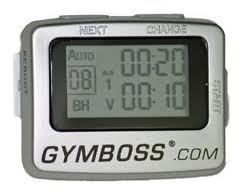Search results for:

We all know the importance of hip and ankle mobility for deep squatting. What most people don’t know about is the importance of adequate tibial internal rotation.
Say What?
Ya, I was confused at first too. You see, we all love the cue knees out during the squat. Depending on who you like to get your facts from we want to be getting our knees to track out somewhere between the 2nd and fifth toes (aka Mr. Pinky toe).
When we sink into a deep squat we need to have adequate mobility of the hips in order to drive the knees out to track properly over the toes. When we descend into the deep squat we also need to have adequate tibial internal rotation to get the knees out over the toes without also spinning the feet out. This would be an important screen for your athletes who can’t seem to get their knees out over their toes, and have excessive toe out (Keep in mind you have to rule out the hips too).
Ala SFMA we can assess this:
If you’re missing some internal rotation you’d benefit from trying to correct this. For the clinicians out there, physical therapist and friend Dr E. has some excellent manual techniques for improving tibial internal rotation and subsequently, your deep squat. Get some knowledge below:
Here’s another do it yourself drill from Adam Kelly Using Dr. E’s Edge Bands. I use this drill quite a bit myself:
Get to work,
And Pope DPT, CSCS
P.S. If you enjoyed this article then sign up for the newsletter to receive the FREE guide – 10 Idiot Proof Principles to Performance and Injury Prevention as well as to keep up to date with new information as it comes,en …read more
Get set to have a lot of conventional wisdom about training and diet tossed out the window. Let the flaming and “yeah-but” arguments begin! …read more
Successful overhead pressers lift with violence and hate. Here’s all the technique cues you need to add to that aggression, plus a complete overhead press program. …read more
There’s a right way and a wrong way to build your butt. Here’s how to develop the perfect glute-ham tie-in. …read more
High-rep pull-ups are cool, but you’ll stagnate and bang yourself up if you keep chasing volume. Instead concentrate on adding weight. …read more

GYMBOSS WILL MAKE ANY WORKOUT EASIER TO PLAN AND EXECUTE WITH MORE ACCURACY AND CONSISTENCY.
- 1 or 2 intervals – 2 seconds to 99 minutes
- Repeat up to 99 times
- Beep and/or Vibrate alarm
- Alarm duration 1, 5, or 10 seconds
- Stopwatch function
- Secure Belt clip
- Compact Size (1 ¾ x 2 ¼ x ½ inches)
- Water and shock resistant
- AAA battery required
- Muscle strength, size, and endurance
- Fat Loss
- Anaerobic endurance
- Cardio endurance
- Increased VO2max
Get your abs back fast with one simple diet tip and four grueling fat-burning finishers performed a few times per week. …read more
partial reps, isolation exercises, high rep sets: All “Bad” in the eyes of performance and strength coaches, but all very effective for building slabs of muscle. …read more
One rep, three phases. This overload method will not only challenge you, it’ll pack muscle on your weakest body parts, fast! …read more
How to Train Safely for a Triathlon
Taking part in a triathlon is one of the most physically demanding things that you can do. Your fitness levels will need to be exceptionally high to endure three different disciplines in immediate succession of one another, which means a lot of training will need to be done over a long period of time. Training is only part of preparing for a triathlon. Your diet will need to change so that you can fuel your training effectively, and you can easily find triathlon training nutrition guides to help.
Your training should begin well in advance of the event, as this will allow you to get into suitable shape and not over exert yourself. Each week you should be training with swimming, riding and running. Aiming to train for each activity twice a week is a good start, but it is essential that you have a day off for recovery during the week. This recovery period is as important as the training, as your body needs time to restore itself. When training for each discipline you should also train in proportionate amounts to the distances in the race.
Once your body becomes used to this training you can introduce brick sessions. These are where you do two disciplines back to back, and although this will be a real struggle at first, you will soon find your fitness levels improving, which will allow you to perform well in the race. As the race day approaches you should find yourself capable of doing these brick sessions as well as all 3 disciplines at a slow pace.
Gear to Aid your Performance
You will also want to train with all the right gear, so that you are used to it once the race rolls …read more


 Location: Östermalmsgatan 13
Location: Östermalmsgatan 13 Phone: +46 (0) 141-478830
Phone: +46 (0) 141-478830 Email:
Email: 




